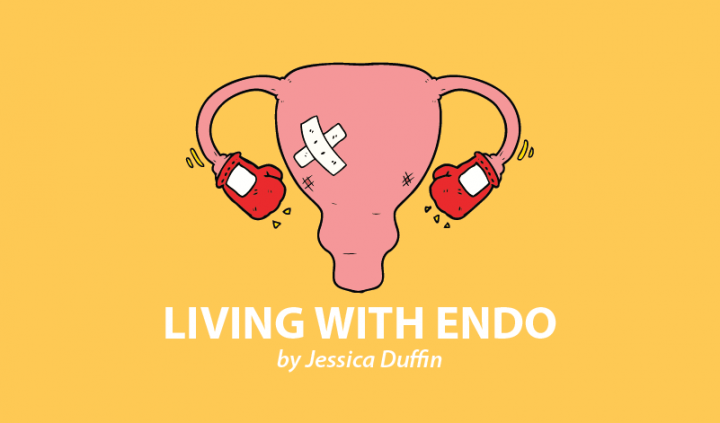“Everything feels like a stressor, Jessica. I can’t cope with any of it,” one of my clients told me.
We were seeking ways to help her lower her stress levels and regain her energy. While exploring options, she realized that even the idea of meditating, choosing a film, or running a bath felt exhausting. She wasn’t just stressed by actual stressors, everything had become stressful.
She’s not alone. I see this in most of my clients, and in myself, too. Hypothalamic-pituitary-adrenal (HPA) axis dysregulation is rampant among the endometriosis community. Years of chronic pain, dismissals by doctors and even loved ones, anxiety, depression, and sleepless nights from health worries and pain all lead to total burnout.
The HPA axis is a system that allows the hypothalamus and the pituitary and adrenal glands to communicate. The system can then respond to stress and regulate our internal body clock by releasing adrenaline and cortisol.
Chronic physical or emotional stress can cause elevated cortisol levels. Over time, this can lead to system dysregulation, resulting in significantly reduced cortisol levels.
At first, this may not sound like a bad thing. But cortisol dictates our circadian rhythm. It wakes us up, it energizes us for the day, and it decreases to allow us to sleep at night. When our cortisol levels are low or not at the proper levels, we may feel exhausted all day, every day, or exhausted in the morning yet wired at night. To understand this further, head to my recent column titled “The HPA Axis Dysfunction’s Connection to Endometriosis.”
What can you do about it if this sounds like you? First, check that the symptoms resonate with you. Dr. Jolene Brighten shares a comprehensive list of symptoms here, as does Nicole Jardim in her book, “Fix Your Period.”
The next step is testing your cortisol awakening response, if you can afford to do so. This test shows what your cortisol levels are throughout the day. A salivary test, commonly called a CAR, is the best option.
Of course, I always recommend you work with a practitioner or at least educate yourself with reliable sources, such as “The Adrenal Thyroid Revolution” by Aviva Romm, MD. But there are some foundational changes you can begin making now that will help your body to recover.
Sleep structure
Give yourself a set wake-up time and bedtime each day, and try to stick to it as much as possible. Think of it as resetting the time on your alarm clock before setting the alarm. Your circadian rhythm needs to know the time and structure of the day before it can work out what time to raise cortisol levels and wake you up.
Get enough sleep
Of course, this idea can be stressful when we’re struggling to sleep in the first place. Don’t worry about getting it perfect — just have the intention of improving your sleep and know it may take some time to get there.
Aim to be in bed for nine hours to allow your body the chance to get eight hours of sleep. Work on your evening routine to optimize your chances of getting some good shut-eye.
Sunlight
Your circadian rhythm responds to sunlight — it needs to know when it’s day and when it’s evening. Getting about 20-30 minutes of sunlight (without sunglasses) as early as possible can help get your circadian body clock back on track. If you don’t have energy to go outside, you could sit by an open window when you first wake up or eat breakfast in your garden, if you have one.
Stress management
Chronic stress caused the dysregulation in the first place. While we cannot avoid stress completely, we need to find ways to lower our cortisol levels daily. This could be five minutes of mindfulness before work or even just deep breaths spaced throughout your day. Whatever you do, the key is finding something you enjoy and can do on a daily basis.
Blood sugar
Chaotic blood sugar doesn’t just cause inflammation and problems with our sex hormones, it can mess up our HPA axis, too. At a minimum, make sure you’re eating regularly, not allowing yourself to go hungry, and having fiber, fat, and protein with each meal and snack. Learn more about blood sugar here.
***
Note: Endometriosis News is strictly a news and information website about the disease. It does not provide medical advice, diagnosis, or treatment. This content is not intended to be a substitute for professional medical advice, diagnosis, or treatment. Always seek the advice of your physician or other qualified health provider with any questions you may have regarding a medical condition. Never disregard professional medical advice or delay in seeking it because of something you have read on this website. The opinions expressed in this column are not those of Endometriosis News or its parent company, BioNews, and are intended to spark discussion about issues pertaining to endometriosis.

